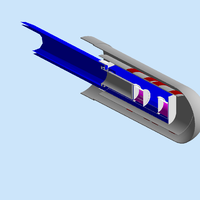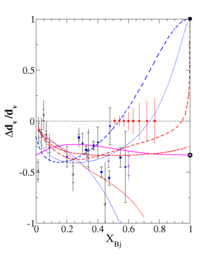Difference between revisions of "2018 NSF Proposal"
| Line 20: | Line 20: | ||
==Broader Impacts== | ==Broader Impacts== | ||
| + | In addition to the scientific program described here, this proposal represents a major effort in the area of educating future scientists. The present shortage of graduate students in experimental and theoretical nuclear physics is having a detrimental impact on our national laboratories and facilities which posses a plethora of data but limited manpower for analyzing and disseminating the information. The Idaho State University Department of Physics tenure and tenure-track faculty all have research interests which are connected to nuclear physics and are in a position to directly address the shortage of graduate students. With its on campus accelerator and detector laboratories, the Department focuses on experimental and applied physics, giving students a strong hands-on educational experience. | ||
=Project Description= | =Project Description= | ||
Revision as of 02:19, 5 November 2018
RFP Due date Dec. 11
https://www.nsf.gov/pubs/2018/nsf18564/nsf18564.htm
Project Summary
We propose to continue a program of using electromagnetic and electroweak probes to study hadronic matter on a fundamental level at the Thomas Jefferson National Accelerator Facility. As part of this program, each principal investigator will be taking a sabbatical to lead the flagship measurements of this program during this funding period. We are requesting support from the NSF to complete these measurements that our graduate students will be using for the degrees in Physics.
Intellectual Merit
The intermediate energy nuclear physics group at Idaho State University (ISU) has an established fundamental physics program, based at Jefferson Lab, to enhance our understanding of nucleons and nuclei. The CoPIs in this proposal are all co-spokespersons on experiments to perform measurements on the underlying symmetry and structure of the quark and gluon components of the nucleon and the characteristics of the skin or surface of a nucleus. Dr~Dustin McNulty is continuing his work using parity violation to precisely measure the neutron skin of lead and calcium to test nuclear model predictions of the difference between the radii of protons and neutrons in a heavy nucleus. Dr.~Tony Forest is continuing a measurement of the down quark fractional polarization in the nucleon to test predictions of pQCD via JLab experiment PR12-06-109. Two graduate students will perform measurements during this funding period that will form the foundation of their Ph.D. thesis.
Broader Impacts
In addition to the scientific program described here, this proposal represents a major effort in the area of educating future scientists. The present shortage of graduate students in experimental and theoretical nuclear physics is having a detrimental impact on our national laboratories and facilities which posses a plethora of data but limited manpower for analyzing and disseminating the information. The Idaho State University Department of Physics tenure and tenure-track faculty all have research interests which are connected to nuclear physics and are in a position to directly address the shortage of graduate students. With its on campus accelerator and detector laboratories, the Department focuses on experimental and applied physics, giving students a strong hands-on educational experience.
Project Description
Introduction
CLAS Polarized Structure Function
The pQcd prediction is shown as a solid filled circle while the open circle represents the results from ref ~\cite{ISgur1999}, ~\cite{Roberts2013}. The red dash-dot line is a dyson-swinger euation calculation from reference ~\cite{Cloet2005}. The blue dashed line is an early parameterization of the world data from ~\cite{Leader1998}. The blue line and blue dash-dot curve are parametrization fits to the world data from reference ~\cite{Avakian2007} with and without the pQCD constraint when non zero angular momentum states are included. The solid red and dashed red curves are a more recent parameterization of the world data set from reference ~\cite{JAM15} without and with the pQCD prediction respectively.
pQcdPrid G. Farrar and D.R. jackson, Phys. Rev. Lett. 35 (1977) 1416
Isgur1999 N. Isgur, Phys.Rev. D89 (1999) 034013
Roberts2013 C. Roberts et. al., Phys. Lett. B727 (2013) 249
Leader1998 E. Leader, et. al., Int. J. Mod. Phys. A13 (1998) pg 5573
Cloet2005 I. Cloet et. al, Phys. Lett. B621 (2005) pg 246
Avakian2007 H. Avakian, et. al., Phys. Rev. Lett. 99 (2007) pg 082001
JAM15 P. Jimeniez, et. al., Phys Rev. D89 (2014) 034025, Phys. Lett. B738 (2014) pg 263

